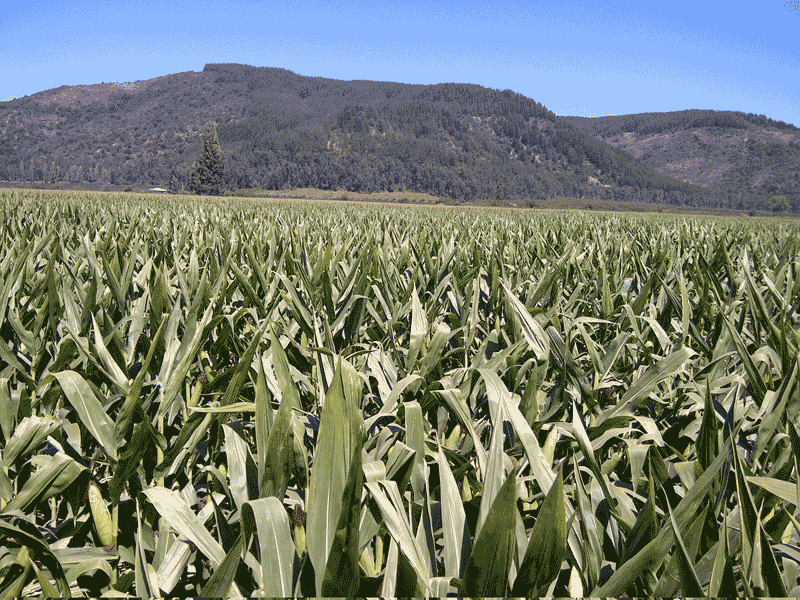Seed corn production
SNOWBIRD STYLE
signs of spring weather have Ontario corn farmers eager to get out into the fields and take advantage of an early planting season. But when it comes to getting seed into the ground they may not have their first choice of hybrids this year.
Seed corn growers experienced what Grant Craven, vice president of production for Pride Seeds, calls a ‘double hit’ last year, meaning extreme heat in key growing areas, in both North and South America, that has significantly reduced the availability of preferred corn hybrids. Extreme high temperatures during the pollination of seed corn reduced anticipated yield by as much as 50 per cent in some areas of the US in 2011. The weather forced some companies to increase their seed corn acres in South America in efforts to meet demand. And despite Ontario seed corn growers having the best seed corn yield anywhere in North America in 2011, some Ontario based corn seed companies followed suit, ramping up production in Chile and Argentina as well. “We were fortunate in Ontario to have a later spring,” says Craven who explains that the delayed planting pushed the pollination window farther behind the US, and Ontario seed corn missed most of the heat wave during the critical stage of pollination.

harvesting in the southern hemisphere
More than ever, the 2011 growing season in South America, primarily in Argentina and Chile, saw seed corn companies increasing production in what the industry calls their ‘contra season, or counter season.’ Off-season production in the Southern Hemisphere provides companies the opportunity to mimic seed corn production in the Northern Hemisphere and typically companies choose to produce seed corn in South America to conduct research and increase multiplication. The winter contra season provides the opportunity to advance new materials and speed up market access of desired hybrids. And, in the case of 2011, South American production was necessary for some companies to make up for production shortfalls.
“Corn seed production in South America is a necessary reaction to the ups and downs of Mother Nature,” explains Craven who points out that while it’s convenient to have a production back-up plan, it comes at a cost. Shipping the seed alone significantly increases the cost of production since many companies fly their parent seed down in the fall and pay freight to ship the production back to Canada and the US in the spring. High production costs force seed corn companies to prioritize hybrid production, and while it comes at a cost, the pay offs enable them to maintain market share and customer base.
Argentina and Chile are the popular destinations for seed corn production. Craven explains that Argentina’s climate is similar to parts of the US corn growing regions and offers vast tracks of land while Chile’s climate is more like Ontario with similar days to maturity for corn, day time temperatures, relative humidity levels and smaller fields. Growing conditions and port access are the major reasons corn seed production is duplicated in these countries.
Similar to the length of season in North America, seed corn grown in South America is planted in early September or October, the plants are detassled in November and December and harvested in mid-February or March. Dried on the cob, the corn is shelled and lightly cleaned before being shipped in containers for further processing in Canada and the US. Craven says all Pride corn seed is processed – cleaned, sized and bagged – in Ontario. He also explains that many companies take advantage of Chilean fruit boats to ship seed corn to North America since the vessels are smaller and faster, however, as with most seed production costs in South America, it comes at a premium.
a look ahead
Corn acres across North America are expected to increase this year. Seed corn will be in high demand with the US predicting more than 93 million acres and Ontario as high as 2.3 million acres. Unfortunately, the best of intentions to make up for seed corn shortfalls last year by increasing production in South America didn’t yield what many companies were hoping for. While production in Chile wasn’t affected, Argentina experienced similar extreme heat conditions during the critical pollination period amplifying seed corn shortages for the 2012 planting season.
At the mercy of Mother Nature, seed corn production in 2011 was significantly affected and may leave many corn growers facing some tough choices this spring when it comes to selecting corn hybrids. However, Craven points out the bright side, an early spring in Ontario means that regardless of the hybrids they plant, growers can maximize their yield potentials by planting early. Craven is also optimistic saying, “the good news is Chile corn harvest was ahead of schedule this year allowing us to get corn seed into the hands of our growers in time for an early spring planting.”
As Ontario corn farmers roll out onto the land, seed corn companies are taking inventory of their warehouses and already making plans for 2012 production. Craven predicts that no matter what the coming growing season will bring, many companies will ramp up production again in South America this fall to make up for existing shortfalls. Production is based on sales predictions and with corn acreage predicted to increase, seed companies want to be ready with a secure line up of the top-yielding hybrids.
farmers and weather affect seed corn production
The ability for seed corn companies to take advantage of winter production in South America is key to maintaining production and streamlining desired hybrids to market. Dave Harwood, technical services manager with Pioneer Hi-Bred Ltd. says that while contra season production in South America is important, the push for earlier corn planting in recent years is making it difficult for seed companies to supply growers with South American grown seed on time.
The combination of larger and advanced seeding equipment, larger farm operations, precision ag equipment, new corn genetics and seed treatments, and trends in on-farm management have all enabled farmers to plant earlier and earlier each year. Weather conditions also play a huge factor in planting seasons and Harwood says it’s becoming more difficult each year to deliver seed produced in South American in time for North American planting.
“Winter production was once a part of our routine supply process,” says Harwood who notes that the earlier seeding trends over the past 10 years combined with the high costs of winter production have resulted in the company’s utilization of South American seed production to an as-needed basis rather than part of Pioneer’s planned production. Pioneer has since focused its seed corn production locations in Ontario, Michigan and the US mid-west. Diversification of production regions reduces the company’s reliance on only a few growing regions and the impact of localized weather.
While the general seed corn industry fell below overall production targets, forcing them to ramp up contra season production in South America this past winter, Pioneer didn’t. Harwood attributes the strategy of geographic diversity as the key to stabilizing production while increasing their ability to meet earlier planting windows. “Everyone relies on winter production in South America, it’s important to utilize it on a strategic basis,” says Harwood.
WEB SPECIAL
Seed corn in the Southern Hemisphere
Seed corn production in Argentina and Chile has long been a standard production practice for North American seed corn companies. Taking advantage of similar weather and growing seasons, seed corn companies often rely on winter production – or contra production, a common industry term – to conduct research and increase multiplication. The winter contra season also provides opportunities to advance new materials and speed up market access of desired hybrids. And, in the case of 2011, South American production was necessary for some companies to make up for production shortfalls.
Grant Craven, vice president of production for Pride Seeds also describes production in South America as “a necessary reaction to the ups and downs of Mother Nature.” Extreme high temperatures during the pollination of seed corn reduced anticipated yield by as much as 50 per cent in some areas of the US in 2011. The weather forced some companies, including Ontario seed production companies, to increase their seed corn acres in South America in efforts to meet demand. Unfortunately, weather patterns followed seed corn production south and yields in Argentina were also reduced due to extreme heat conditions during the critical pollination period amplifying seed corn shortages for the 2012 planting season.
At the mercy of Mother Nature, seed corn production in 2011 was significantly affected and may leave many corn growers facing some tough choices this spring when it comes to selecting corn hybrids. •







